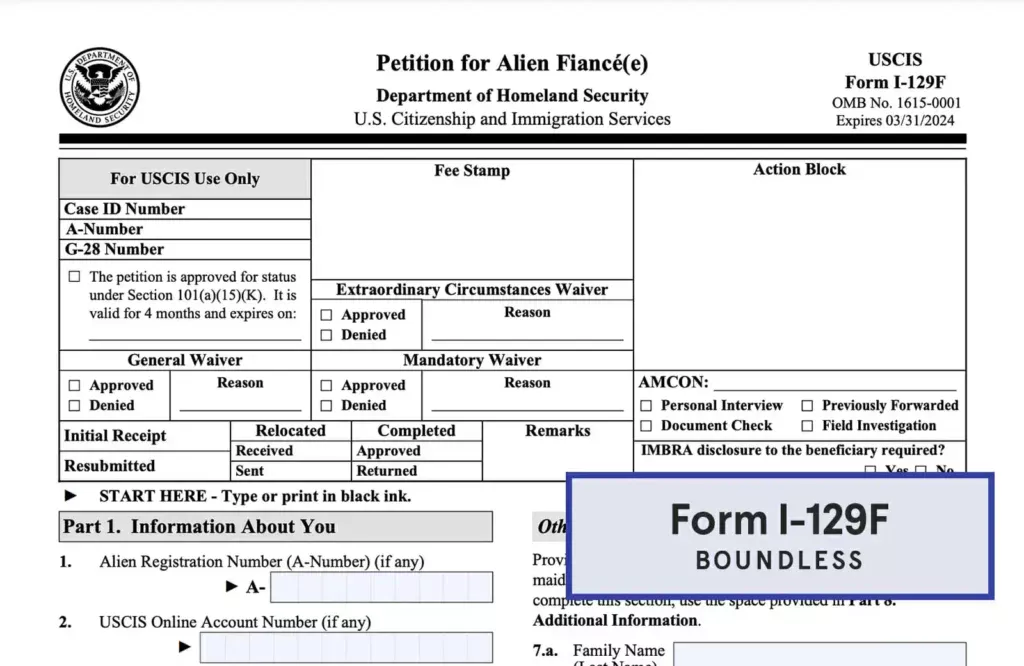The I-129 form, formally known as the Petition for a Nonimmigrant Worker, is a crucial document in U.S. immigration law. Employers typically use this form to request permission for non-U.S. workers to temporarily work in the United States. Various visa categories, such as H-1B, L-1, and O-1, are supported by the I-129 petition. One common question that arises in this context is: can an employee review the I-129 form? This article provides a comprehensive breakdown of the I-129 form, the rights of employees, and how the process works, offering clear guidance on whether employees can review the form.
1. Understanding the I-129 Form: Purpose and Scope
The I-129 form serves as the cornerstone of the process through which an employer petitions for temporary employment authorization for foreign nationals. The form is used across several nonimmigrant visa categories, including H-1B (specialty occupations), L-1 (intra-company transfers), O-1 (individuals with extraordinary ability), and others.
Filing the I-129 is mandatory for employers before their foreign employees can start working in the U.S. The petition demonstrates that the job position is legitimate, the employee is qualified, and the employer is adhering to wage and labor laws. However, employees often wonder whether they have any role in this process or the right to review the form once submitted.
2. Employee’s Role in the I-129 Petition
Unlike the Labor Condition Application (LCA), which involves both the employer and employee, the I-129 petition is employer-driven. This means the responsibility for completing and submitting the form rests primarily with the employer or the company’s legal representative. The form contains detailed information about the employer, the nature of the job being offered, and the qualifications of the employee.
While the petition is technically the employer’s document, employees are directly affected by the information provided on the form. The I-129 details personal information such as the employee’s qualifications, experience, and job duties. Therefore, it’s common for employees to ask whether they can review the form to ensure its accuracy and completeness.
3. Can Employees Legally Review the I-129 Form?
The short answer is: yes, employees can review the I-129 form, though they are not legally required to do so, nor is the employer legally obligated to share it. Given that the form includes sensitive and personal information about the employee, employers may voluntarily offer the employee a chance to review it before submission. This ensures transparency and helps to avoid potential errors or inconsistencies that could affect the employee’s visa approval process.
However, it’s important to note that the U.S. Citizenship and Immigration Services (USCIS) only communicates with the employer regarding the petition. The employee is not the petitioner and, therefore, does not have direct access to the form through USCIS. If the employee wants to see the form, they will need to request a copy from the employer.
4. Why an Employee Should Review the I-129
While employees may not always have the right to access the form directly through official channels, it’s highly recommended that they ask to review it. There are several reasons for this:
- Accuracy of Personal Information: The I-129 includes critical details about the employee’s background, education, and professional experience. Any errors in this section could lead to delays or denials in the petition process.
- Job Duties and Salary: The form outlines the job duties and salary being offered, which must align with the terms discussed between the employer and the employee. If there are discrepancies, it could cause legal issues or misunderstandings later.
- Consistent Job Classification: The I-129 is used to establish that the employee qualifies for the specific visa being applied for. Any incorrect classification could lead to the petition being rejected by USCIS.

5. Employer’s Obligation to Provide Access
Employers are not legally required to provide the employee with a copy of the I-129 form. However, many employers choose to share it to maintain transparency and ensure that all details are accurate. In some cases, legal representatives or attorneys may discourage sharing the form with the employee to avoid legal liabilities or unnecessary complications.
From a practical standpoint, reviewing the form can help the employee feel more secure in the process, especially if their ability to work in the U.S. depends on the petition’s approval. Additionally, employees can alert the employer to any mistakes before they submit the form, potentially preventing costly delays.
6. Key Considerations When Reviewing the I-129
If the employee does get a chance to review the form, there are several important sections they should focus on:
- Part 2: Information About the Employer – Ensure that the employer’s information, such as the name, address, and tax ID, is accurate.
- Part 5: Basic Information About the Proposed Employment – Verify that the job duties, salary, and work location match the agreement with the employer.
- Part 8: Petitioner’s Signature – Confirm that the form is signed and dated by an authorized representative of the employer.
Any errors in these sections could lead to a delay or denial of the petition. If an employee spots an error, they should immediately notify their employer or the legal representative handling the case.
7. What Happens If Errors Are Found?
If errors are found on the I-129 form after submission, they can be corrected, but this can complicate the process. The employer would need to file an amendment or a correction, which could delay the overall approval process. Therefore, it’s essential to get the form right the first time.
For employees, reviewing the form can be seen as an extra layer of protection. While they may not be directly responsible for filing the form, ensuring its accuracy can help streamline the immigration process.
8. FAQs on the I-129 Form
No, the employee does not need to sign the I-129 form. The form is filed by the employer or the company’s legal representative.
No, the I-129 form must be filed by the employer. The employee cannot independently file the form.
If incorrect information is submitted, it could lead to a delay in processing or even the denial of the visa petition. Employers can file amendments if needed, but it is best to ensure the form is accurate before submission.
Processing times vary depending on the type of visa and whether premium processing is used. On average, it can take several weeks to months for USCIS to process an I-129 petition.
The employer receives notices from USCIS about the petition’s status. While employees cannot directly track the status, they can ask their employer for updates.
It depends on the employer. Some are open to sharing the form to ensure transparency, while others prefer to keep the process confidential.
Key Takeaways
- The I-129 form is a critical part of the immigration process for nonimmigrant workers in the U.S.
- While the employer is responsible for filing the form, employees are directly affected by its contents.
- Employees are not required to review the form but may request to do so to ensure accuracy and transparency.
- Reviewing the form can help avoid costly mistakes and delays in the petition process.
For those navigating the I-129 process, understanding the roles and responsibilities of both employers and employees can help ensure a smoother, more efficient experience.
Read More: How to Apply for an H-1B Visa: A Step-by-Step Guide
- Official I-129 Form (USCIS)
You can directly download the I-129 form from the official U.S. Citizenship and Immigration Services (USCIS) website. This page also provides detailed instructions on how to complete the form: I-129, Petition for a Nonimmigrant Worker – USCIS - Processing Times for I-129 Petitions (USCIS)
To check the processing times for I-129 petitions, visit this official page. It provides estimated wait times based on the type of visa and service center: Check Case Processing Times – USCIS - Premium Processing Service (USCIS)
For faster processing of your I-129 petition, USCIS offers a premium processing service. Learn more about the costs and requirements here: Premium Processing – USCIS
These external links provide users with official, up-to-date, and reliable sources of information directly from USCIS, helping them navigate the I-129 process efficiently.

Jonathan Hartley is a highly regarded senior criminal lawyer with over 15 years of experience in the UK legal system. He began his career at a prestigious law firm in London, where he specialized in both defense and criminal law. Known for his ability to craft compelling defense strategies, Jonathan has successfully represented clients in high-profile cases and earned multiple awards for his contributions to the field of law.
In addition to his legal practice, Jonathan is also an accomplished legal writer, contributing articles to top legal blogs and online platforms. His work not only provides valuable insights into legal matters but also meets Google’s E-E-A-T standards by delivering accurate, reliable, and trustworthy information to readers. Committed to legal ethics and public welfare, Jonathan actively participates in discussions on law and justice while educating the public through his writing.










